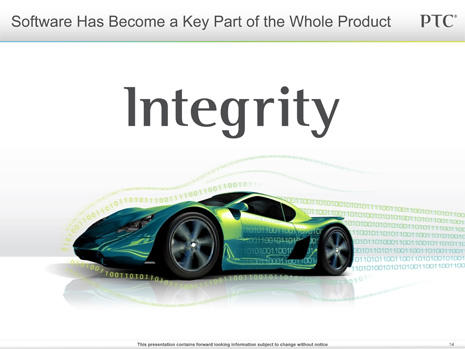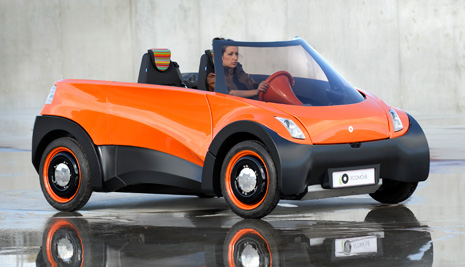
I’ve just arrived back in the office after a whirlwind couple of days at PTC Live TechForum in Copenhagen.
Over 200 PTC users from the Nordics region descended on the Bella Center yesterday for a one day, free event to hear about the latest in PTC solutions.
Greg James, PTC’s senior vice president of marketing, flew over from the States for the event and kicked off proceedings by updating attendees on the company’s vision, strategy and objectives as well as taking a look at the key highlights in 2011. “Our goal is to help our customers achieve a competitive advantage – a very lofty goal but it is the standard we are working towards at PTC,” he said.
Next up on stage was Andrew Wertkin, CTO of the Integrity Business Unit, whose talk revolved around the big product news this year namely creo, Windchill and Integrity.
Introducing Windchill 10.0, he explained how it has a friendly and more intuitive interface: “We’ve cleared up the user interface and streamlined it for PLM activities. We did usability testing with customers so we really built it around their usability needs.”
He also mentioned the nine right-sized apps in creo, how Integrity (which came with its acquisition of MKS earlier in the year) is bringing engineering processes into product development and how PTC want to leverage open standards so that the customer can easily collaborate with their suppliers. “2011 was all about massive upgrades and acquisitions. 2012 is about leveraging those to bring value to our customers faster,” he said.
During lunch we got to see a great electric car that has been designed in creo by Danish firm Ecomove. Mogens Lokke, the company’s CEO, brought a prototype of the car with him and discussed how it is different to other electric vehicles. Called the QBeak (below), the main differences include the driver’s seat in the middle, the electric motors are situated in the wheels, its body is built in foam and the only instrumentation in the car is the owner’s smartphone. To be honest, I was quite taken with this car so look out for a more in-depth view in D3D when it is officially launched early next year.

In the afternoon I attended three customer case studies. First up was Rob Melville of Roll-Royce who spoke about software configuration management with Integrity. He made it clear that the press can’t say anything about the company without clearing it with Rolls-Royce press office first so for now we’ll leave it at that.
The customer case study by WinWinD was rather interesting. This Finnish company founded in 2000 supply 1MW and 3MW wind turbines. Jonas Hagner explained the reasons for implementing PLM and what the benefits have been.
Next was Thorbjorn Futtrup Jacobsen, of Bang & Olufsen‘s method and process development department who spoke about how the company keeps track of all their documentation for developing, servicing and maintenance using Windchill. Although it uses creo for the development of its audio products it also finds that it has to deal with Catia data because of the in-car audio systems it designs for the likes of Aston Martin, BMW, AMG and Audi. Rather interestingly I thought is that they use Windchill for managing both in-house creo data as well as Catia data. In the future they will also be looking into managing NX too. Bang & Olufsen will also be adopting Integrity soon because it feels it will be a strategic fit for them.
Tidbits I picked up during the other talks I attended in the afternoon as well as the panel discussion at the end of the day:
– creo 2.0 will be coming in March 2012
– creo configuration management will be part of this creo 2.0 launch. This configuration management tool has been given the name of ‘creo options modeller’ for now but that is likely to change to something a bit snappier when officially launched
– PTC are looking to provide app templates to allow partners to create third party apps much easier
– creo is 100% compatible with previous versions of PTC products – open as normal then save as creo file
– creo 2.0 will see creo Sketch on Mac OSX






